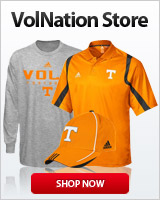GUNTERSVOL
VOL FROM BIRTH
- Joined
- Dec 30, 2017
- Messages
- 8,276
- Likes
- 11,434
The ruling requires athletes to be able to professionally earn money for their marketability, while STILL participating in an amateur sport. Zero allowable dollars was easier to enforce, then they pivoted to only allow it to be earned AFTER entry to the schools, and now they will have to attempt to mitigate the POTENTIAL of PAY FOR PLAY being masked in the legal payments for their protected NIL value.You still don't address that the organization practices, the rules it makes for the schools, are being declared violations of Antitrust and the organization is abandoning those rules.
So, when the rule against paying players market value is declared an Antitrust Violation, the schools will need to start paying players market value or risk their own lawsuits, which they'll lose also.
At that point, you have pro football. Athletes playing ball, being paid, and STILL you need an organization to ride herd, enforce a salary cap, control free agency, etc, etc.
Most likely solution seems to be creating a new Division within the organizaion where unlimited NIL dollars for each player is allowed, but each school will have a cap, with each lower division having decreasing limits for what each player can earn. Completely in line with the different roster size, scholly limit, and travel squad restrictions used to maintain competitive balance to date. There will have to be enough slots available to insure that no player is prohibited from having available spots ON SOME TEAM within the organization to absorb their individual value. I suspect they will ease the pain by allowing SOME NIL earnings for EVERY level including those that do not even give scholarships. Not too worried about the T-shirt, restaurant and mattress deals impacting competitive balance and for sure they should have to ability to deal with earnings like every other student.
The SCOTUS did not in anyway guarantee a player the right to these earnings while participating at their school of CHOICE, just the opportunity cannot be denied them within the NCAA. Nor did it define a reasonable standard for the timing of declaration of the amounts of money relative to the competitive season or signing days. With the portal firmly in place a player will have an ability to find a new home if the school elects to not extend his scholly to remain within the NIL cap, anymore than meeting the scholly cap today. See the PRIME decision path on those numbers at Colorado. A few more court cases on the way to refine whatever the NCAA path turns out to be. It is possible a high profile player with an NIL deal in hand would be rejected by a school due to legal issues or other team related factors. The decision for sure did not protect the individual schools or the collectives from having their plans altered by the addition of NIL caps throughout the membership of the NCAA, JUST the students. Our court case basically fought the NCAA trying to penalize schools for recruiting students while THEY were establishing THEIR value to those forces outside the school prior to their entry into school.




